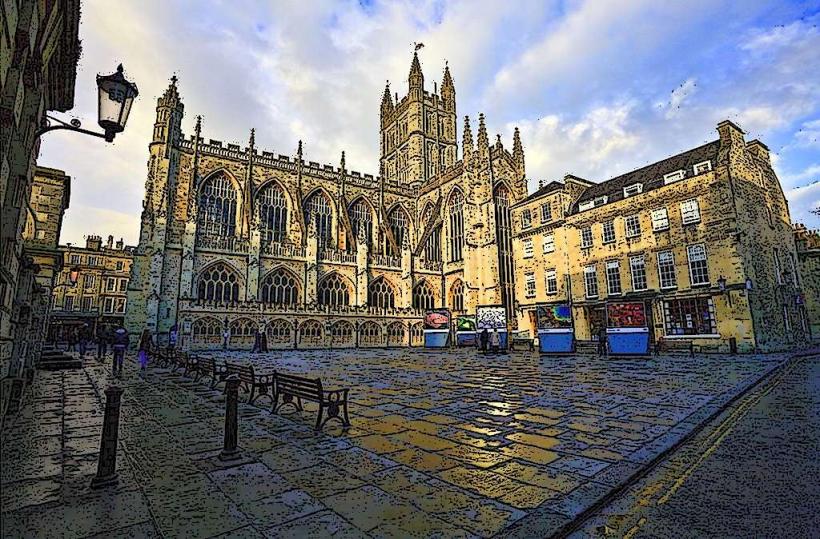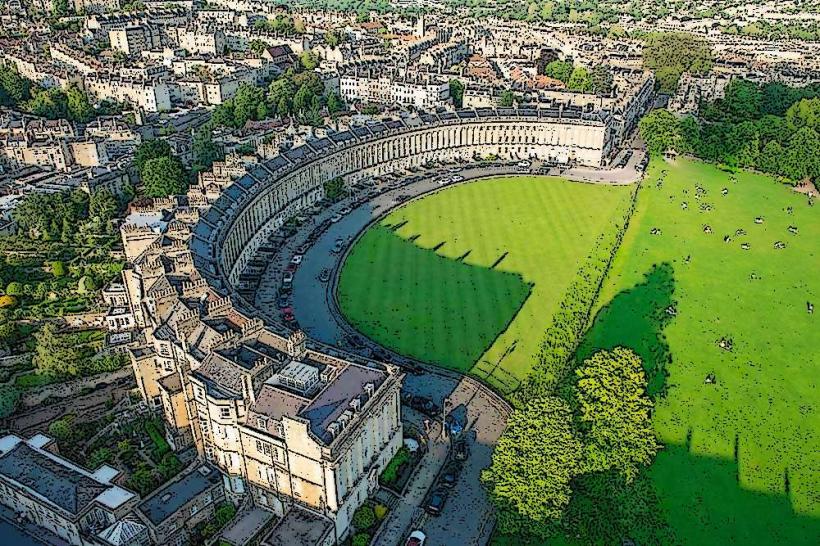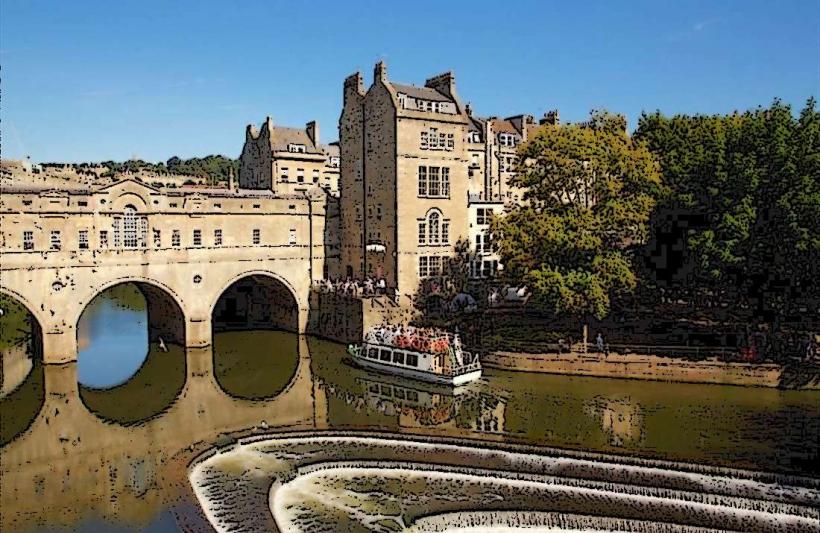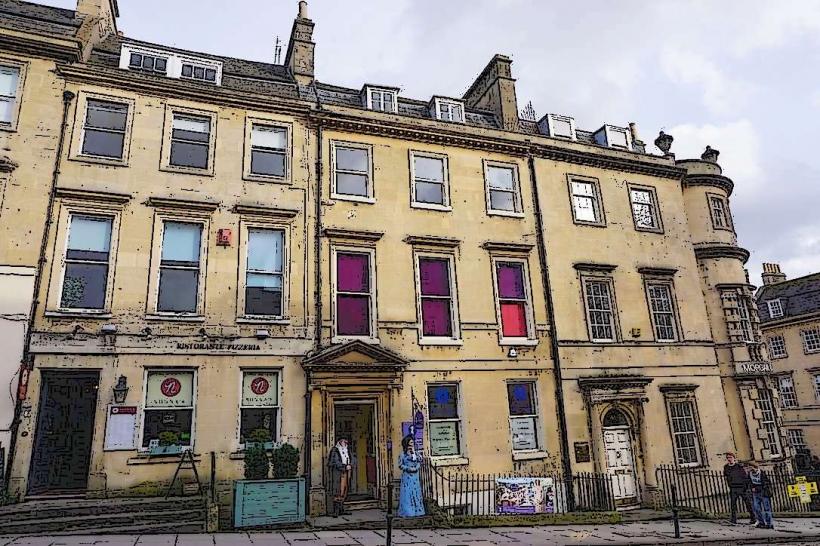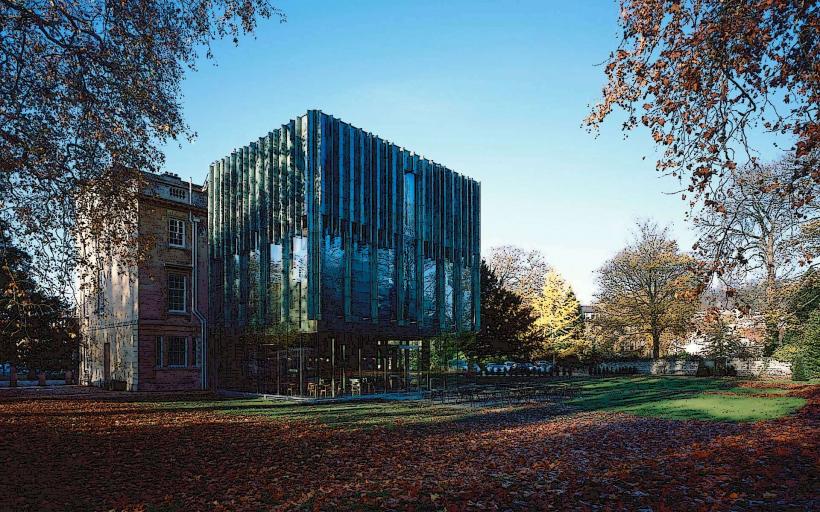Information
Landmark: Roman BathsCity: Bath
Country: United Kingdom
Continent: Europe
Roman Baths, Bath, United Kingdom, Europe
Overview
In Bath, England, the Roman Baths stand as one of the UK’s most fundamental historical sites, drawing crowds who lean over the steamy water to glimpse the past, besides what remains are the well-preserved traces of a Roman bathhouse and temple complex, built in the 1st century AD when Rome still ruled Britain, their stone walls cool and worn smooth by centuries.It seems, In Roman times, Bath went by the name Aquae Sulis, and its steaming fiery baths rose around natural springs believed to cure the sick, what’s more today, the Roman Baths give you a vivid window into the ancient world, where steam still rises from the water and Roman engineering, architecture, and culture come to life.The Roman Baths began as part of a temple complex honoring Sulis Minerva-a blend of the local Celtic goddess Sulis and Rome’s Minerva-where steam rose from mineral springs that still bubble today, likewise people had soaked in the site’s steaming sweltering springs for thousands of years before the Romans came, but it was under their rule that the baths grew into a lavish complex of marble pools and sacred spaces.The Romans built the Baths in the 1st century AD, during Emperor Claudius’s reign, not long after they seized Britain in 43 AD, also the Romans flocked to the steaming scorching springs, their waters rising at about 46°C (115°F), and built an elaborate network of pools, baths, and stone buildings to capture what they believed were the springs’ healing powers.After the Romans left Britain in the early 5th century AD, weeds pushed through cracked stone, the baths crumbled, and in time they were left to the rain and silence, and over the centuries, the site vanished under thick layers of soil, with fine grains of sediment settling like dust over stone.Builders in Bath didn’t uncover the Roman Baths until the 18th century, when digging for modern foundations revealed the ancient stone pools beneath the earth, also excavations began, and in time the gates swung open to visitors, turning it into one of the UK’s busiest heritage sites.The Roman Baths complex stretches across several levels, with chambers, pools, and walkways-many still intact or carefully rebuilt so you can almost hear the echo of footsteps on the worn stone, likewise one highlight of the complex is the Great Bath, the heart of the Roman Baths, where clear, steaming water still fills its ancient stone basin.This wide pool, about 1.6 meters deep, once served as a region where neighbors gathered to bathe, steam rising from the water on cool mornings, in addition the water stays at the same temperature it did in Roman times, warm enough that you can notice faint wisps of steam rise from its surface.Classical columns rise around the pool, flanked by weathered stone and a terraced walkway that catches the afternoon sun, giving the region a striking, almost theatrical presence, and you can watch the water shimmer in the Great Bath, but no one’s allowed to swim there today.Believe it or not, The Sacred Spring bubbles up with steaming water, the very source that fills and warms the baths, as a result people have drawn from the spring for thousands of years, and archaeologists have found carvings and offerings that show the ancient Celts worshipped it long before the Romans set foot here, generally Water pours from the spring at about 1.17 million liters a day, warmed deep underground by the Earth’s own heat, on top of that visitors can stand by the Sacred Spring and watch steam curl up from the warm water that once fed the baths.The Roman temple stood high above the bathhouse, its stone columns dedicated to Sulis Minerva, equally important much of the temple has vanished over the centuries, but archaeologists have uncovered pieces of it-weathered stone reliefs and chipped fragments of statues.Among the temple’s treasures, the most celebrated is the Gorgon’s head-a heavy block of stone carved with Minerva’s stern, unblinking gaze, what’s more the temple stood as a vital hub of worship, where people came to wash in cool stone basins, whisper prayers, and lay offerings before the goddess, seeking her blessing of health and healing, somewhat In a way, The Bathing Complex: The Roman Baths weren’t a lone pool at all, but a maze of steaming, stone-lined chambers linked together, to boot the baths offered a series of rooms, each with its own purpose: the Frigidarium with its bracing chilly water, the Tepidarium kept at a gentle warmth, the Caldarium heated until the air shimmered, and the Laconium, a steam-filled chamber that set the Roman Baths apart from other ancient bathhouses.Believe it or not, Warmth rose from the hypocaust beneath the floor, and bathers settled onto smooth stone benches to sweat and unwind, along with the laconium was one step in the full bathing ritual, a warm, dry room that left your skin tingling and was believed to boost health and well-being.The Pump Room, a graceful neoclassical hall beside the Roman Baths, invites visitors to sip the warm, mineral-rich spring water that still flows there today, while the Pump Room once bustled with dances and lively chatter, and it still draws crowds for afternoon tea and concerts, keeping Bath’s rich spa-town past within easy reach.At the Roman Baths, the museum holds a rich trove of artifacts-coins, pottery, and other archaeological finds-uncovered right beneath its ancient stone floors, along with they include Roman statues, coins worn smooth by time, delicate jewelry, carved inscriptions, and sacred offerings.The museum’s highlights include bronze statues of the goddess Sulis Minerva, thin lead sheets etched with Roman curses from the baths, and carved stone inscriptions left by worshippers pleading for her aid, as a result interactive displays and modern tech make the history of the Roman Baths feel alive-you can almost hear the splash of water in the ancient pools.Actually, Visitors can dive into the history of the baths through audio guides, vivid virtual reconstructions, and glowing multimedia displays, uncovering details of Roman life and the unique features woven into the complex, simultaneously the museum also showcases intricate exhibits on the engineering of the Roman baths, including the hypocaust heating system that once sent warm air drifting beneath the tiled floors, maybe Thermal Bathing Today: You can’t swim in the ancient Roman Baths anymore, but Bath still draws visitors for its steaming natural sweltering springs and inviting spa pools, meanwhile just a short hike away, the Thermae Bath Spa lets you soak in steaming boiling spring waters beneath sleek glass walls, blending today’s comforts with a ritual that’s been alive since Roman times, partially At the Roman Baths, you can join guided tours-some with special themes-where expert guides bring the site’s history to life, from the echo of water in the Great Bath to the stories carved into ancient stone, likewise the site hosts all sorts of events-from hands-on family activities to lively lectures and rare exhibitions-giving visitors a chance to step closer to Bath’s rich history, maybe even pausing to study a centuries-vintage artifact up close, perhaps If I’m being honest, The Roman Baths welcome visitors with disabilities, offering wheelchair access to most areas-right up to the edge of the steaming Great Bath and through the quiet halls of the museum, simultaneously if you’d like extra help or want to explore the site at your own pace, you can pick up an audio guide-just plug in your headphones and listen as you go.Gift Shop: Step inside to browse souvenirs tied to Roman history and Bath’s heritage-maybe a minute bronze coin or a postcard still smelling faintly of fresh ink, likewise the shop sells Roman-themed jewelry, stacks of well-worn books, replica artifacts you can run your fingers over, and a handful of other keepsakes.In conclusion, the Roman Baths in Bath give you a rare chance to step into the past and take in the grandeur of ancient Rome, from echoing stone chambers to the faint scent of warm mineral water.
Author: Tourist Landmarks
Date: 2025-08-26

